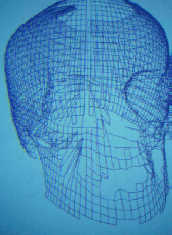

Figure 1 (left): Wireframe representation of a digitised 3-D image of a skull
Figure 2 (right): The 3-D colour laser scanner.
At Sheffield University we are working on a computer system for facial reconstruction (Tyrrell et al. 1997; Evison 1996; Evison et al. 1998). This is based on our ability to capture a 3-D colour digital image of a skull (Figure 1) using a laser scanner (Figure 2).


Figure 1 (left): Wireframe representation of a digitised 3-D image of a skull
Figure 2 (right): The 3-D colour laser scanner.
Our aim is to develop a computer system which is:
Although accuracy in facial reconstruction has increased recently with the introduction of measurements taken from ultrasound scans of living individuals (Helmer 1984), these datasets are still based on the twenty or so landmarks used traditionally. We aim to achieve increased accuracy via tissue depth data collection from magnetic resonance (MR) imaging equipment. MR scans of the head are captured as a series of 2-D slices (Figure 3) stored in digital form as a stream of greyscale values.


Figure 3 (left): MR 'slice' of the head
Figure 4 (right): Scanned image of a plastic facial reconstruction (Click on image to access VRML reconstruction - you will need a VRML plugin such as CosmoPlayer) [380KB].
The soft tissue of the face and the underlying bone contrast clearly and our current research is directed at automating tissue depth data collection. It may be feasible for us to collect circa 100 tissue depth measurements from 100 MR slices amounting to 10,000 tissue depth measurements per head. Despite this considerably more extensive database, it will still be necessary to guess the shape of the eyes, the tip of the nose and the lips. This can be achieved by offering a 'menu' of scanned facial features of living individuals, by 'genetic algorithms' which will generate random shapes or by 'morphing' between standard shapes.
Our prototype computer program for facial reconstruction, which still relies on the traditional landmarks, is effectively instantaneous. The most time-consuming factor will be the human intervention required to select the parameters of age, sex, build, etc., for the reconstruction and to adjust the facial features. With the same skull and the same reconstruction parameters, repeatability is 100%.
Much of our existing research has been directed at improving the accessibility of facial reconstructions. Our initial step was to develop simple protocols for placing plastic reconstructions on the Internet in 3-D using Virtual Reality Modelling Language (VRML). In this way global access to facial reconstructions was quickly achieved (Figure 4).
© Internet Archaeology
URL: http://intarch.ac.uk/journal/issue8/evison/research.html
Last updated: Mon Jun 26 2000